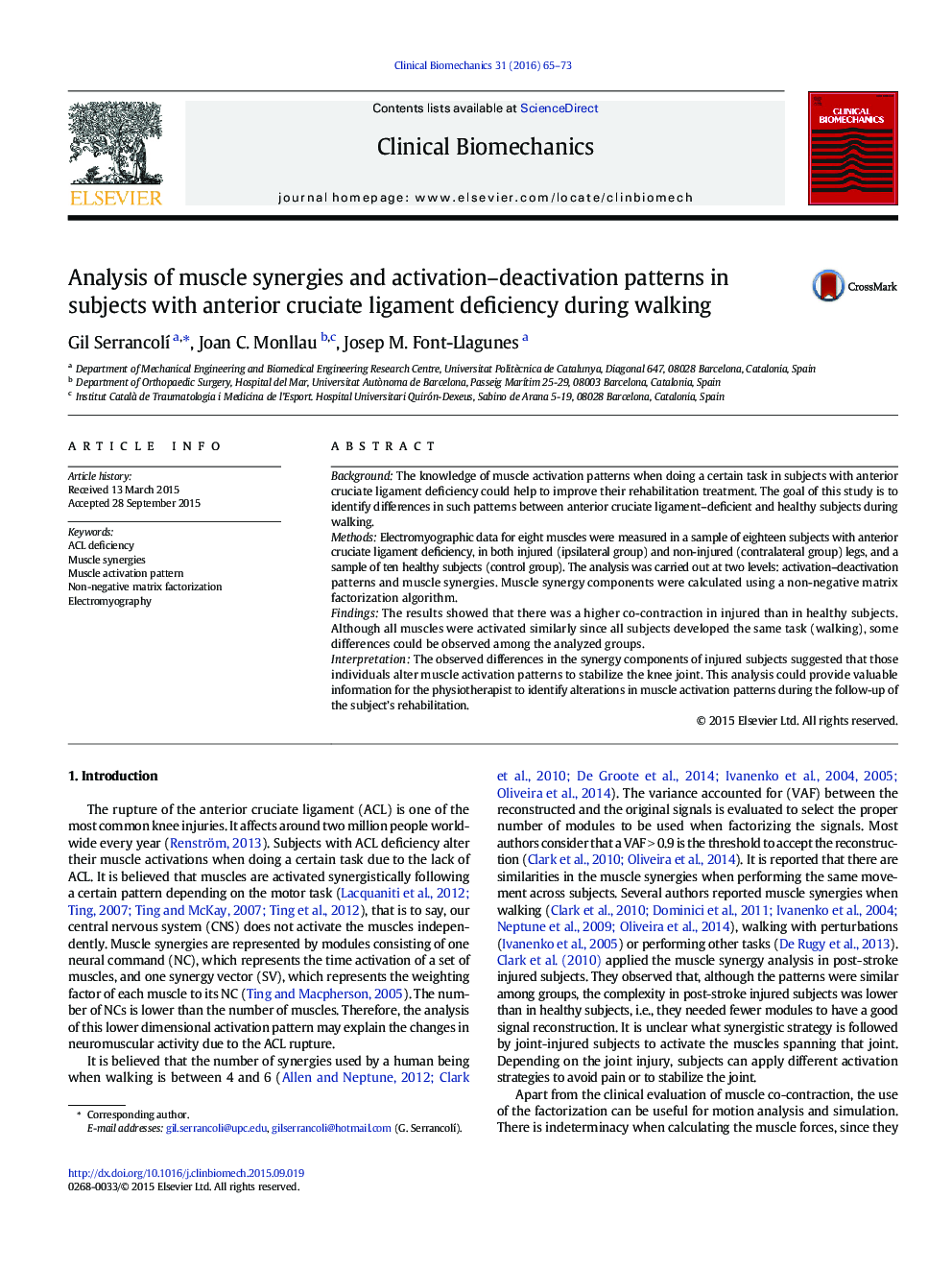| Article ID | Journal | Published Year | Pages | File Type |
|---|---|---|---|---|
| 4050170 | Clinical Biomechanics | 2016 | 9 Pages |
•EMG for healthy and subjects with anterior cruciate ligament deficiency were analyzed.•Onset–offset muscle excitation patterns were compared.•Muscle synergies were extracted using the non-negative matrix factorization.•Subjects with anterior cruciate ligament deficiency had higher muscle co-contraction.•Slightly different tendencies were observed in muscle synergy components.
BackgroundThe knowledge of muscle activation patterns when doing a certain task in subjects with anterior cruciate ligament deficiency could help to improve their rehabilitation treatment. The goal of this study is to identify differences in such patterns between anterior cruciate ligament–deficient and healthy subjects during walking.MethodsElectromyographic data for eight muscles were measured in a sample of eighteen subjects with anterior cruciate ligament deficiency, in both injured (ipsilateral group) and non-injured (contralateral group) legs, and a sample of ten healthy subjects (control group). The analysis was carried out at two levels: activation–deactivation patterns and muscle synergies. Muscle synergy components were calculated using a non-negative matrix factorization algorithm.FindingsThe results showed that there was a higher co-contraction in injured than in healthy subjects. Although all muscles were activated similarly since all subjects developed the same task (walking), some differences could be observed among the analyzed groups.InterpretationThe observed differences in the synergy components of injured subjects suggested that those individuals alter muscle activation patterns to stabilize the knee joint. This analysis could provide valuable information for the physiotherapist to identify alterations in muscle activation patterns during the follow-up of the subject’s rehabilitation.
